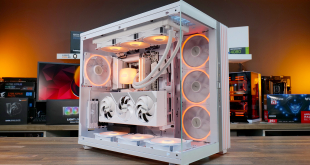Why small form-factor should mean slow performance? It clearly should not. G.Skill, a leading producer of high-end memory modules, this week unveiled an extreme DDR3 SO-DIMM memory kit that weds high clock-rate and capacity.
Many people dump their desktops in favour of powerful laptops or ultra-small form-factor PCs these days, which is why Intel Corp. offers special mobile microprocessors with unlocked multipliers, whereas notebook manufacturers are adding overclocking capabilities to their machines. No surprising that makers of high-speed memory modules are also addressing this market with their products.
G.Skill, this week rolled-out its Ripjaws DDR3L SO-DIMM 16GB (2*8GB) dual-channel memory kit capable of working at 2133MHz with CL11 11-11-31 latency settings and default 1.35V voltage. According to the company, the modules operated stably inside Gigabyte Brix Pro system with Intel Core i7-4770R processor.
The vast majority of notebooks these days feature 1333MHz or 1600MHz DDR3 memory, so 2133MHz modules should speed them up quite a bid. Naturally, they will also boost power consumption of laptops, but given that such notebooks are already equipped with a lot of power-hungry components, this increase should not be dramatic.
KitGuru Says: Modern high-end DDR3 DIMMs can be overclocked to 3GHz on numerous mainboards without many problems. It will be interesting to see whether DDR3 SO-DIMMs for notebooks/SFF desktops will also ever reach such frequency…
 KitGuru KitGuru.net – Tech News | Hardware News | Hardware Reviews | IOS | Mobile | Gaming | Graphics Cards
KitGuru KitGuru.net – Tech News | Hardware News | Hardware Reviews | IOS | Mobile | Gaming | Graphics Cards



